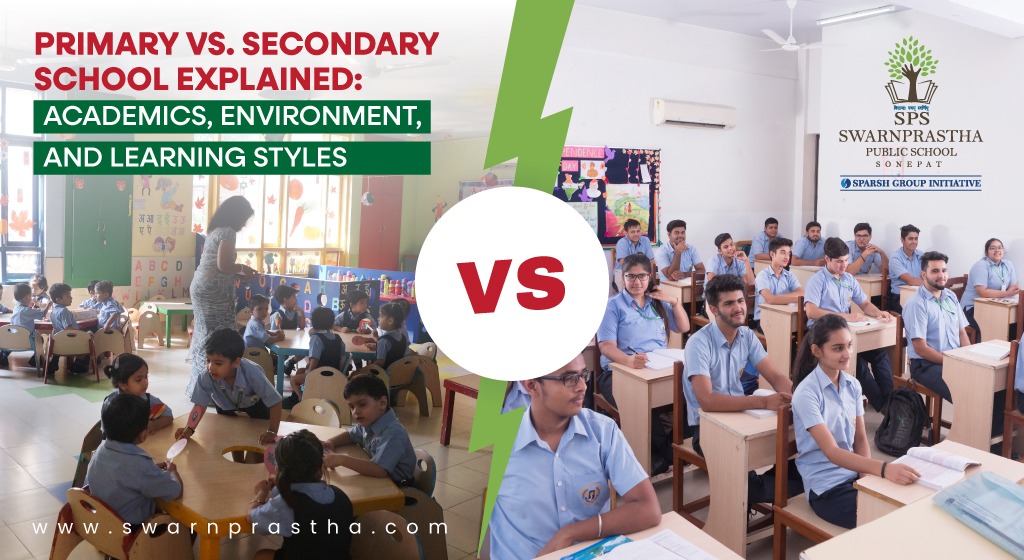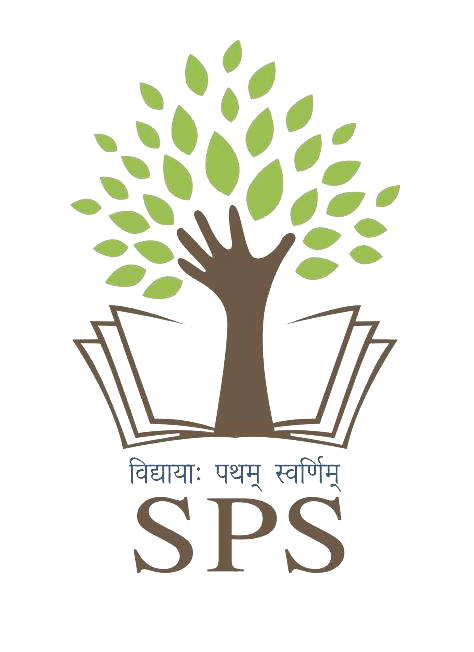The move from primary school to secondary education is a major landmark in the lives of students. This is a transformative phase, signalling academic growth alongside personal development. This is when students begin to realise their true passions, form an idea of career possibilities and with the right guidance, start to walk the path toward a dream.
Young learners face distinctive sets of demands and opportunities during each developmental phase which collectively build an enriching educational experience.

Challenges in Primary School
Young children experience separation anxiety because they lack experience staying away from their parents for extended periods. Some find it difficult to adjust to a new group of friends and a new ambience. At this stage, teachers need to apply innovative teaching approaches that capture children’s interest, engage them more and bring out fun factors through learning.
The adjustment process when meeting a new social environment poses considerable challenges. Adjusting to a new environment proves difficult for some children because they struggle to grasp social expectations. Teachers must use interactive activities together with storytelling to capture their attention and interest and more so, because young children tend to have short attention spans.
As they grow, academic performance gains importance. Often, excellence in extra-curricular activities becomes an added focus area. Overall, it is mandatory to note that harmony and perfect balance are to be nurtured in children at the primary level of education. And in the process of bringing about this, special emphasis must be given to each child’s individual passion, merits and dreams.
Opportunities in Primary School
Primary school continues to provide multiple growth prospects to students. Through hands-on and play-based activities, students develop creativity and curiosity which enrich their learning experience. Students develop character through educational experiences that teach them essential values that include both teamwork and empathy, with responsible behaviour. In classrooms that maintain smaller student-to-teacher ratios, educators can deliver tailored education to each child.
Learning Styles: Primary vs. Secondary Education
One of the most significant differences between primary and secondary education is the learning style. In primary schools, children learn through play-based, experiential, and interactive activities. Teachers use storytelling, visual aids, group activities and hands-on experiments to keep students engaged. Learning is often flexible, focusing on foundational skills such as reading, writing, and numeracy.
In contrast, secondary education shifts towards a structured, analytical and independent learning approach. Students are encouraged to think critically, conduct research, undertake individual and group projects and apply knowledge to real-world situations. Teachers use a combination of lectures, discussions, project-based learning and assessments to prepare students for higher education and career paths. The transition from guided learning to independent study is a key aspect of secondary education.
Challenges in Secondary School
During secondary school, students face multiple challenges. These include increased academic deliverables where teachers set higher standards. This requires effective study skills. The need to handle time effectively becomes crucial because students need to balance an increasing number of classes with their schoolwork along with their hobbies, social life and additional committments. At school, they must navigate through a dynamic environment, involving studies, extra-curricular activities and sports, alongside maintaining healthy peer relationships. Students must learn to handle their studies independently at secondary school. Students in upper grades experience pressure because they need to select subjects that will determine their future career path. And this is where good guidance in schools help children a lot.
Opportunities in Secondary School
Secondary education provides students with various useful opportunities for academic development and personal progress. Such learning deepens their understanding of subjects which helps them strengthen their critical thinking and problem-solving abilities. Students learn self-discipline and responsibility in secondary school which builds their independence until they reach higher education and step into their future careers. The guidance provided helps students in their decision-making through career path recommendations and university applications, alongside vocational training possibilities. The friendships developed during these years generally endure forever while learning valuable skills for life which include teamwork and communication, together with collaboration.
Conclusion
Academic development and personal growth take shape through fundamental roles that both primary and secondary schools provide to students. The foundation of basic skills along with social interaction abilities that primary school teaches is enhanced at secondary school to prepare learners for their future paths. Students achieve success by obtaining appropriate care and support from their parents and educators.
As a learning institution, Swarnprastha Public School understands the vital connection between primary and secondary education, providing students with continuous educational support. The academic and holistic development programmes at Swarnprastha Public School provide students with opportunities to face challenges, as well as teach them how to capitalise on opportunities, thus preparing them for university life and future careers.
FAQ
- What are the key differences between primary and secondary school learning styles?
Primary school learning is interactive, play-based and experiential, using storytelling, group activities and visual aids to keep young learners engaged. In contrast, secondary education is structured and nurtures independence, focusing on critical thinking, research and analytical learning through lectures, discussions and project-based assessments.


